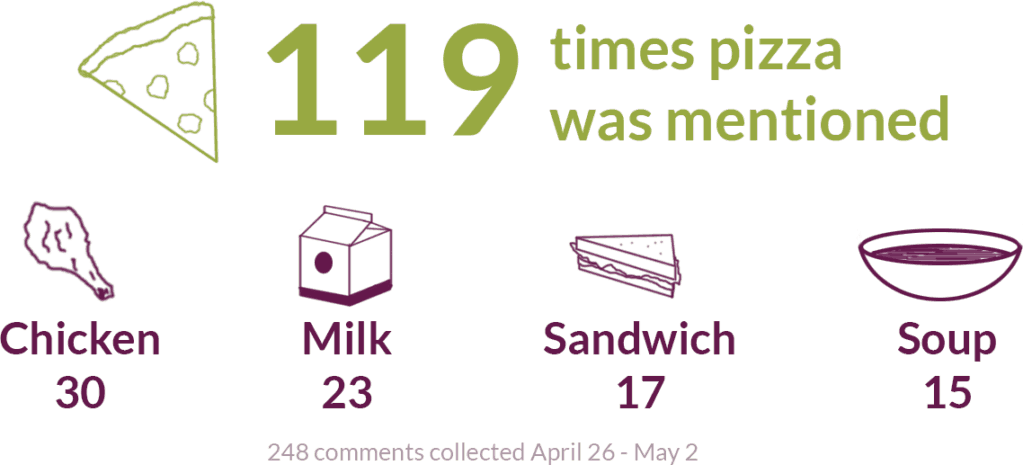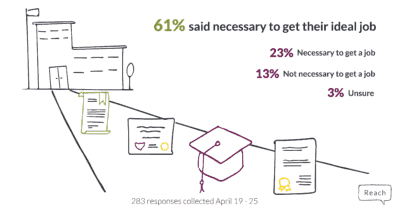School lunches look different depending on where you live. A South Korean school lunch plate includes soup, rice, and a side of kimchi. In Italy, students are served pasta, fish, and salad. In comparison, it may not be surprising that American lunches are among the least healthy due to more processed foods.
We wondered what North Carolinians remembered about their school lunches growing up, so Reach NC Voices asked for their input in our April 26 Reach Roundup newsletter. We posed our Question of the Week: When you think of school lunches growing up, what food comes to mind?
Here’s the breakdown of how participants answered our question as well as some of the comments we received.


“Beautiful salad bars and taco bars. They were delicious and healthy!”
Jennifer from Mooresville
“Square pizza and mashed potatoes with green peas!”
Marci from Clemmons
“Sandwiches with pre-mixed peanut butter and jelly. Didn’t know there was a way to mess up peanut butter and jelly, but they figured it out.”
Elaine from Raleigh
“We had all the food prepared fresh daily. I believe much of the food was whatever was in season. My favorites were the shepherd’s pie and apple pie.”
Leslie from Mooresville
“Square pizza, ‘salisbury steak,’ boxes of chocolate milk, weirdly shaped ‘fruit’ ice desserts (those sort of triangular things), and little cups of ice cream with wooden ‘spoons.'”
Kaitlin from Morrisville
See what else students across the world are chowing down on for lunch here.
Interested in participating in Reach NC Voices? You can sign up to share your thoughts on our weekly questions. We’d love to hear from you!


